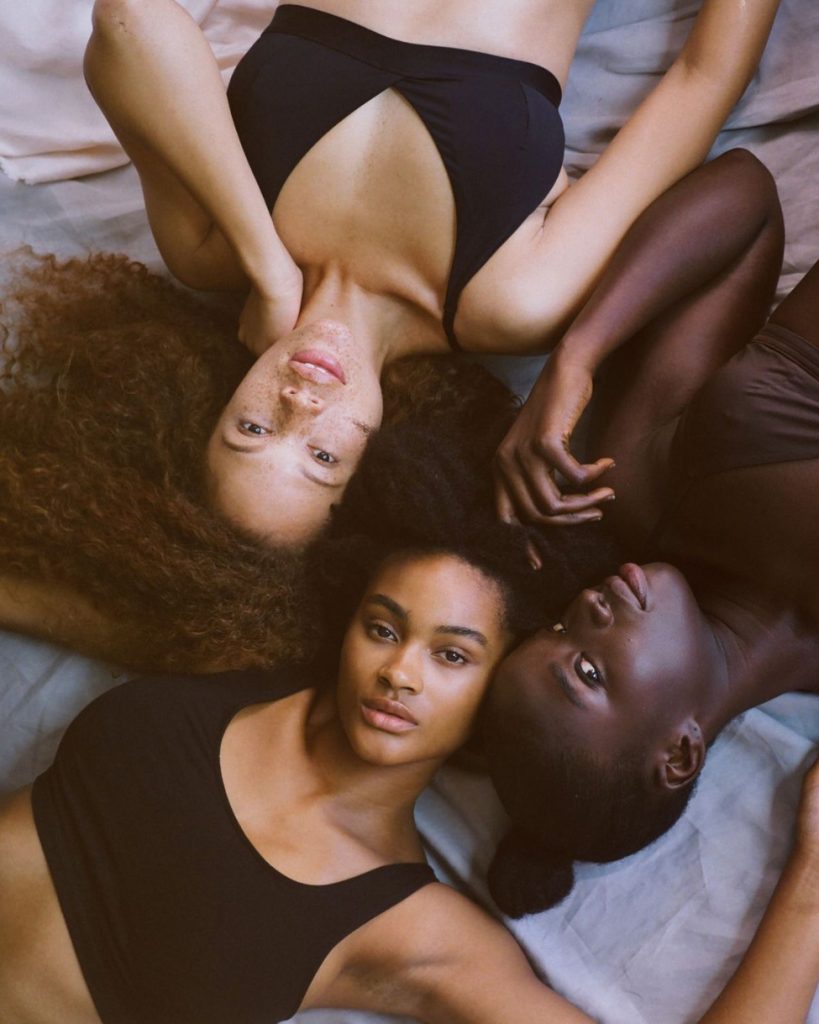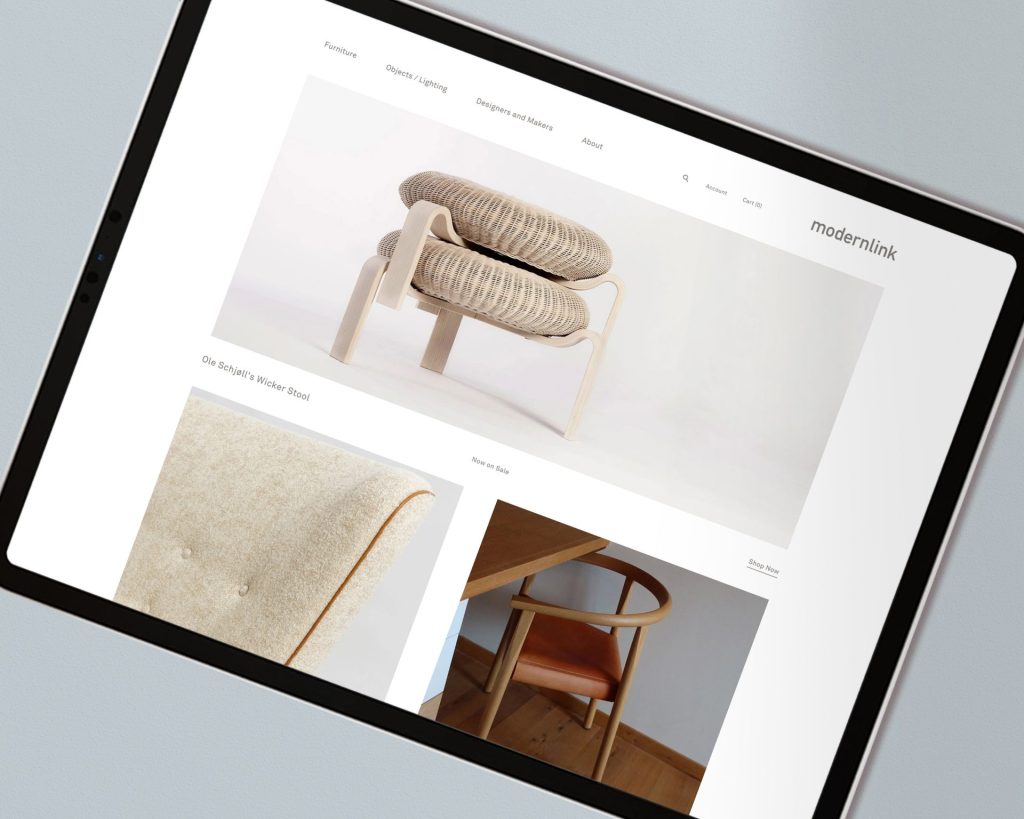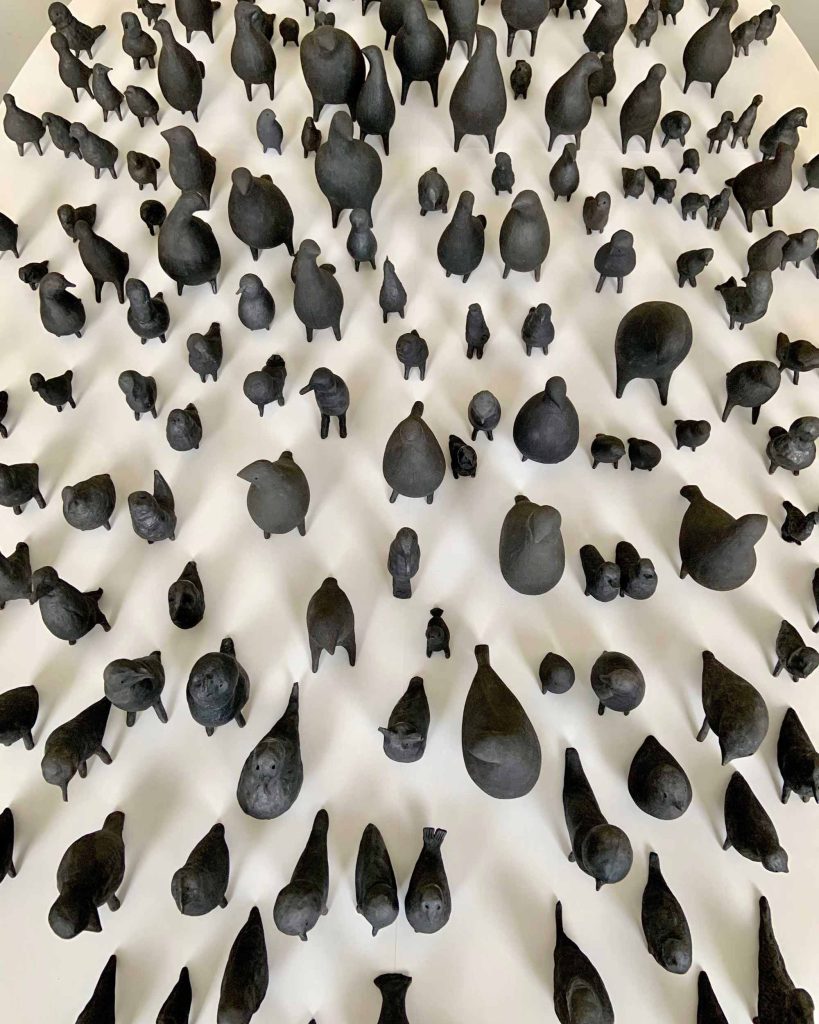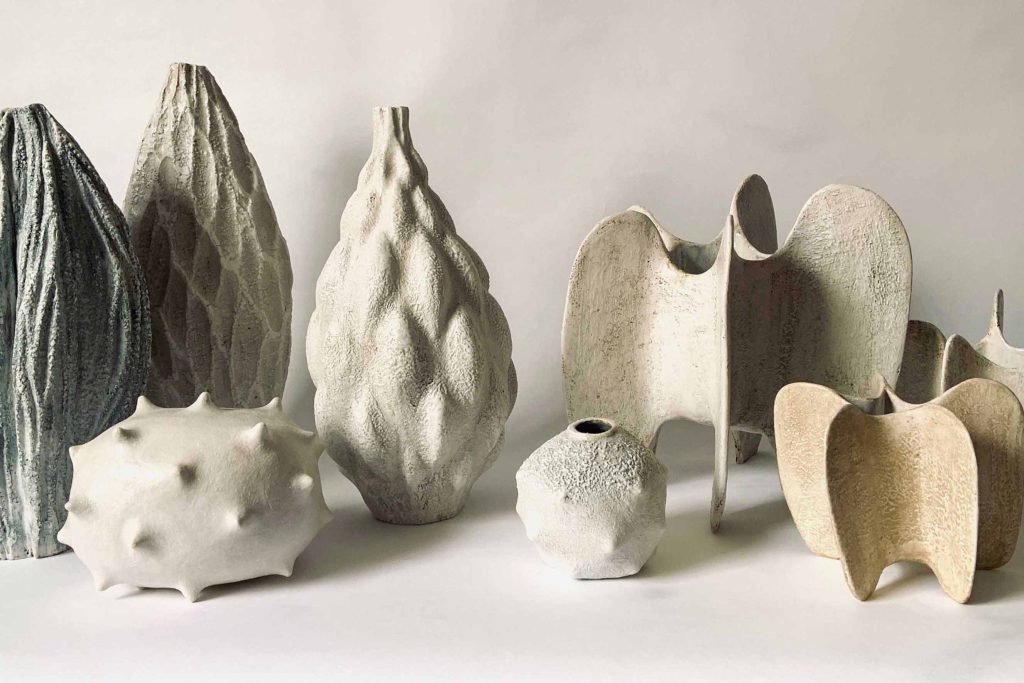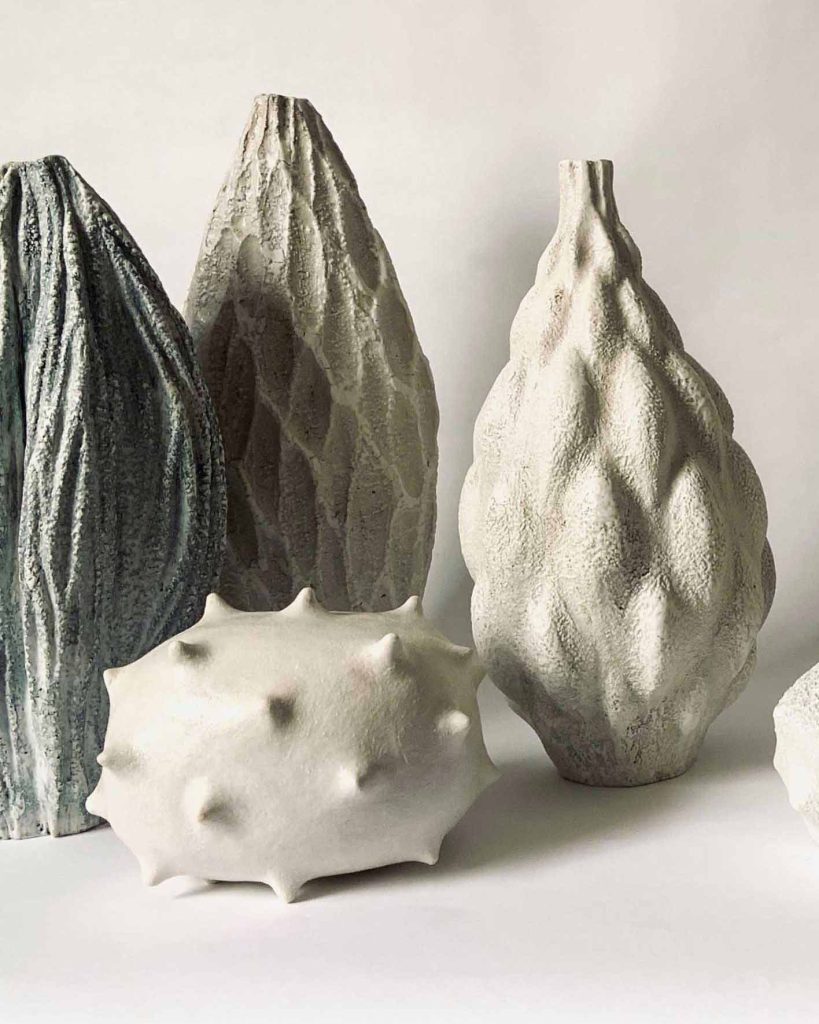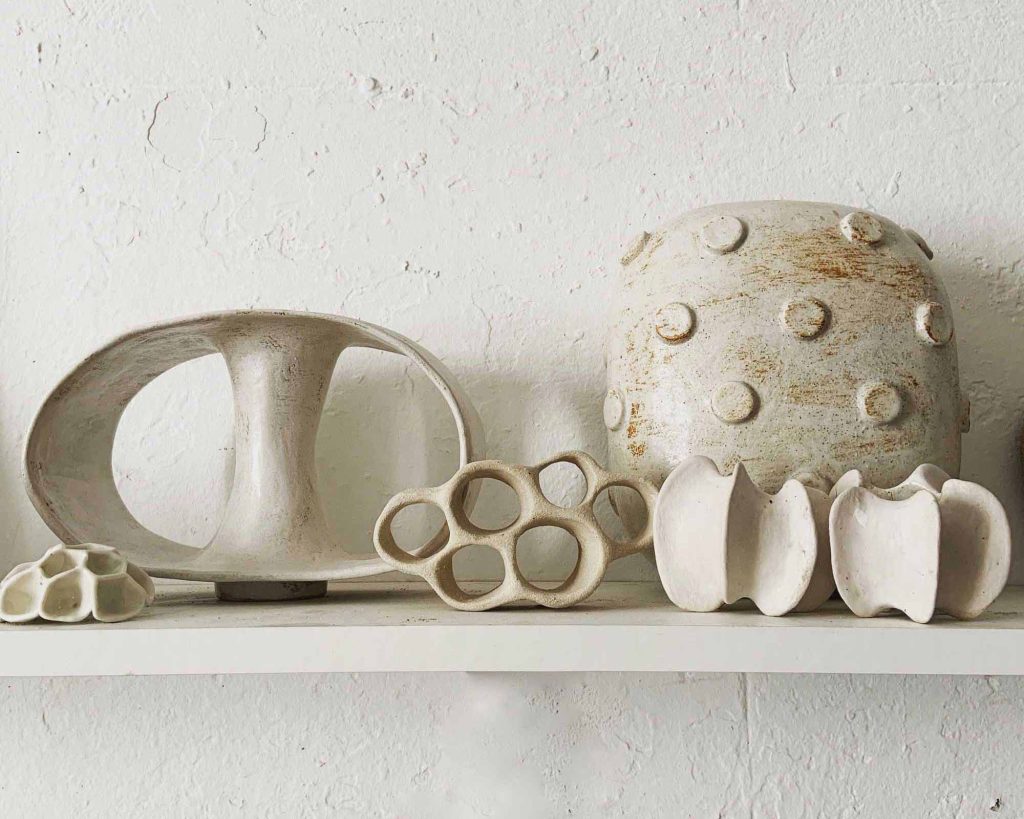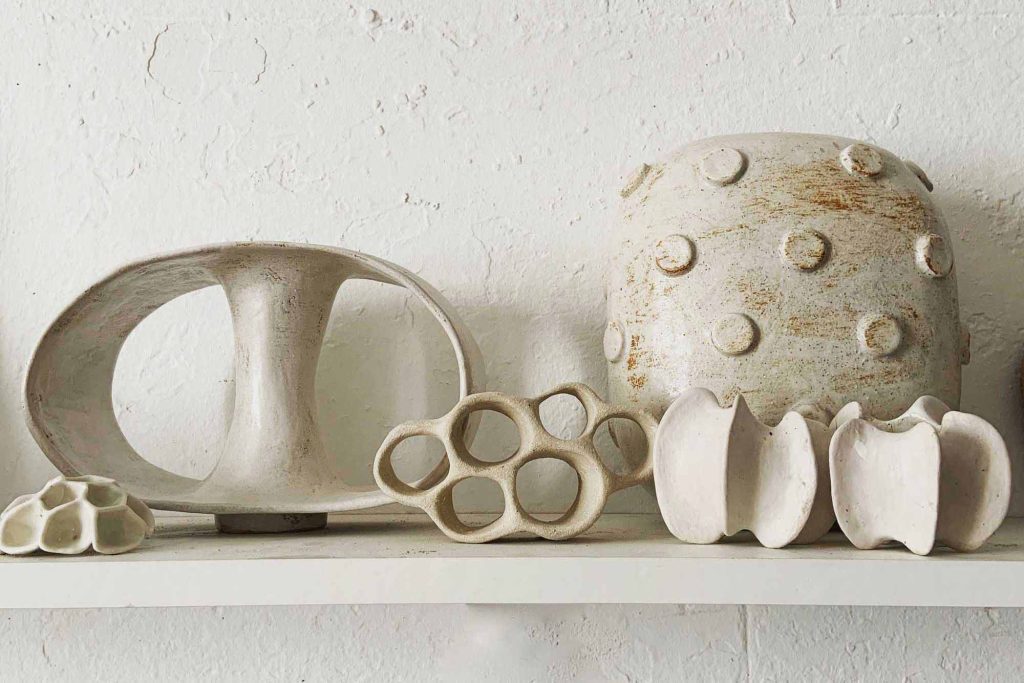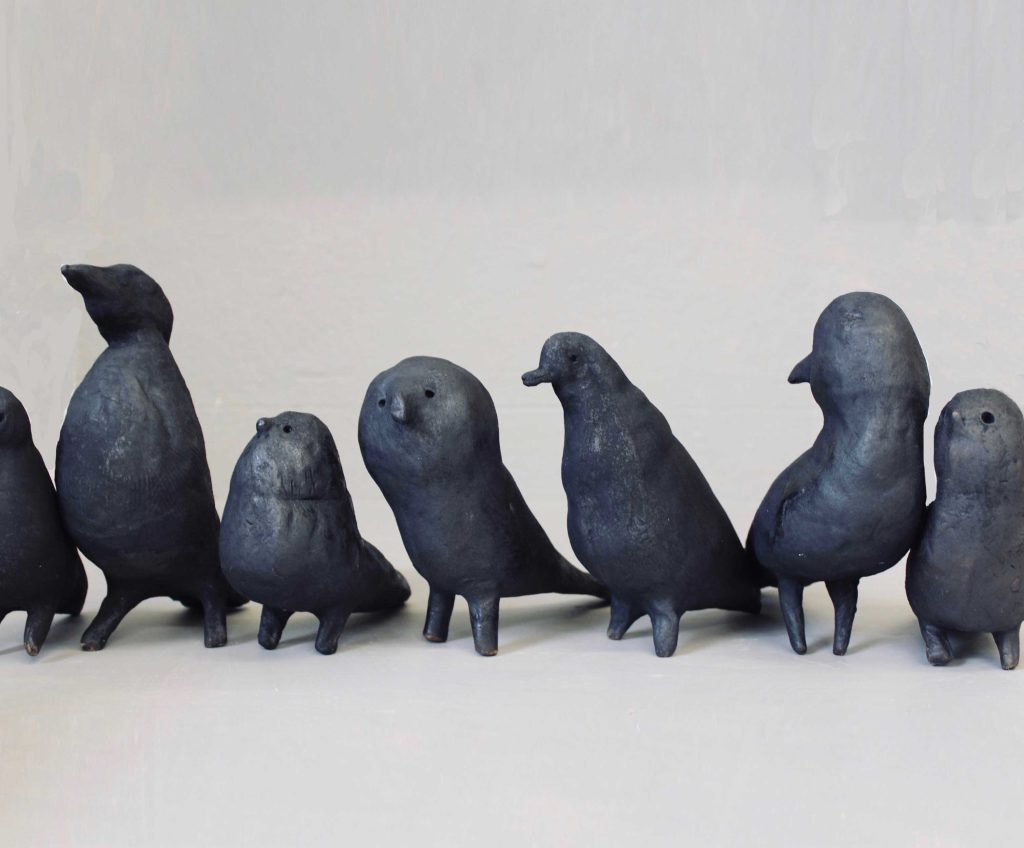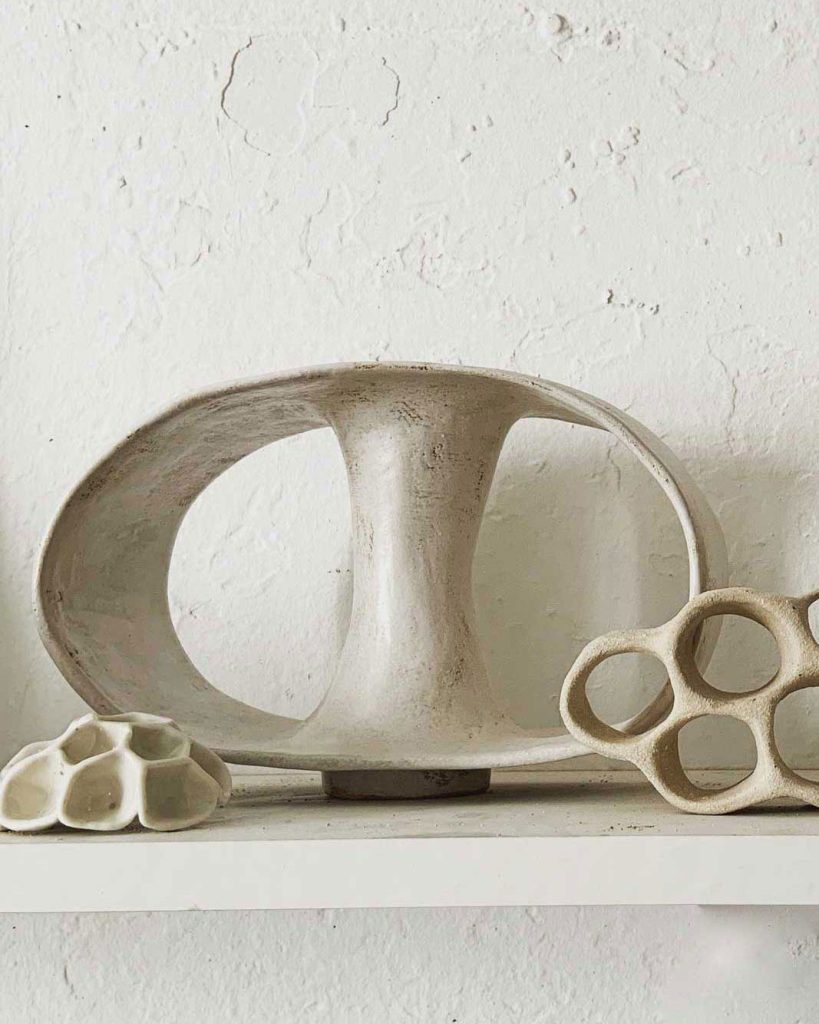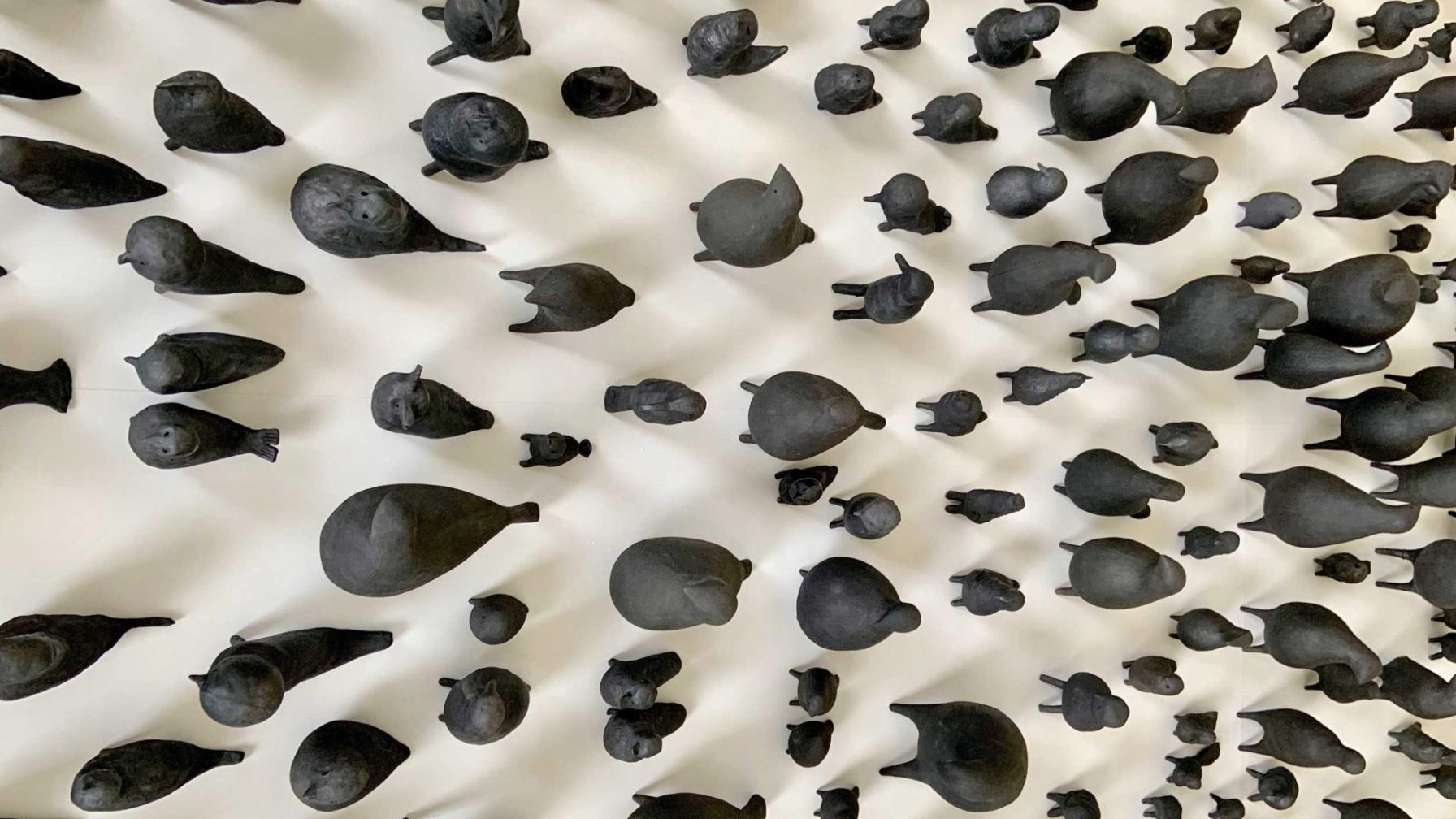

Interview with Julie Nelson
As the ancient philosopher Heraclitus initially asserted, the existence of one entity or experience depends upon the presence of its counterpart. For light, there must be dark; for positive, negative. The negative impacts of our current global circumstances are disastrous, but the positives are also real and shouldn’t be ignored; the planet needs a break and we humans need to re-examine how we operate. This unprecedented world shift has also compelled connection – to each other and our environments. Such themes are inherent to Julie Nelson’s sculptural clay work. Her reverence for the natural world and refined, classical approach to creation reference ancestral memories with the ties to the present. Channeling everything from avian flight formations and anatomy to ancient feminine forms and textural tree bark, Julie transmits ancient wisdom and advocates an empathetic appreciation for everyday beauty.
Natalie Marie Gehrels: Can you share a bit about your path and what are you working on now?
Julie Nelson: I grew up on the South Coast in Devon, which is on the west side of the U.K. I went to college in London, where I studied three-dimensional design — furniture, glass, silversmithing and ceramics. Once I’d done the ceramics, that was it, really. I did this degree many years ago now, and I stayed in London for another 20-odd years. Then, about ten years ago, we moved to Brighton. Prior to moving here, I’d been making big, quite sculptural ceramic lamps. I did a show in New York and sold quite a lot there. Then I had my kids, and it was just impossible for me to do ceramics in any professional sense, because I would have needed to be at work every day, the whole day — ceramics take a lot of looking after. When I was able to start doing my ceramics again, I got into it in a very different way. Now, I feel very much like I’m doing studio ceramics; I’m going much more into the material and seeing what I can do with it.
NMG: So, with the large lighting pieces it was more of a design approach and now it’s more about pulling out a feeling?
JN: I have always had ideas behind my work, but I’ve also always traveled different disciplines. I’m not one-hundred percent an artist. I’m not one-hundred percent a ceramist. I’m not one-hundred percent a designer. I’m a little bit like a Venn diagram. I’ve always been like that, even when I was doing my degree. I quite like a little bit of “otherness.” I’m not really into being defined by something; maybe I don’t like to sit too comfortably in one thing. With the lamps, I’d have people say, “We’d like to take your product,” which I always really hated because they are sculptures. Then they’d say, “Well, they’re a bit craft,” and the craft people would say, “Oh they’re a bit design.”
NMG: There is quite a divide in the ceramic world, between things that are considered functional and things that are considered art. What’s your opinion?
JN: If you’ve got something in your room, you want it to be meaningful — to have some connection with it, whether you’re using or not. There are certain people who have been inspiring my recent work, a lot of the Scandinavian mid-century design ceramists. I’ve decided to channel Axel Salto as my base inspiration, because he was basically looking at natural forms and making extraordinary pieces, which are vessels but they’re really something else. Even now, 60 to 70 years later, they are really powerful.
NMG: How does that influence your current body of work?
JN: I’m doing these vessels that, to a certain extent, are quite restrained. They could be something you pick up from a walk in the woods. I’ve always had a strong draw towards anatomy and the evolution of natural forms. I’m also trying to make similar things, to work through a theme a bit more, because what tends to happen is people say to me “I’d really love one of those,” and then I sort of think “Why do I want to make another one? I want to move on to something else.” I’m trying to stop myself from doing that. I’ve decided to make some quite classic things, in a way. I’m going back to more basic forms — not like proper pottery, because people throwing and really making proper vessels is something else. I’m just trying to be a bit slower about it and not fashionable.
NMG: You’re speaking to the times. I think moving down to the ground and finding ways to be self-sufficient and simpler are exactly the tendency, especially in this moment, in terms of creation.
JN: One of the things I decided to do was to deal with the surface a bit more. Whereas before I’d been very much about the form, I realized that if I was going to sell a piece of work, I really wanted there to be an intimacy. So that when you actually unwrap it, you could see there had been time spent and that I’d really put everything into it. I wanted something that felt very elemental, [like] it had been dug up or found or had grown. I was trying to get that effect by doing lots and lots of experiments and making lots of really awful things that were complete failures — and then having a little moment where I was getting somewhere. There is something about that process of ceramics that really does take that mindset. There is a limit to how much you can really plan. You can’t be a complete control freak because it’s going to get you endlessly frustrated.
NMG: So tell me a bit about how the Flock Project came into being?
JN: I had the opportunity to make some work for a friend’s gallery and they really love animals. They were saying, “Make us some birds.” I decided I wanted to do quite elegant, sort of Italian birds, so they were going to be on their feet, which is not easy because the feet want to collapse in the kiln. Then somebody asked me if I wanted to do an installation for an art festival we have here. So I made a hundred of these birds and filled a living room with them. After doing that, I felt like I maybe should really deal with the migration aspect that came up when I was making them.
When some of their legs broke, I fixed them and put them in [the installation]. Like in any society, these pieces (like people) were going to be undervalued because they’d been broken — but they took more of my time to make. I thought it was quite interesting, the idea that, actually, they take more of my time, but they were going be of less value. I got a really good reaction and thought: I’d love to open the project out, to set up something where I was teaching people who had migrated to make birds and then do an exhibition, where the birds actually had a story because they been made by people who had come to the UK from other countries.
So I worked with a group of refugees, teaching them how to make ceramics. Once I’d taught the techniques, they came up with some absolutely fantastic forms. People who took part were from Somalia, Guinea-Bissau, Syria, Iraq and Bosnia. They really got it, we had some creative sessions at the Victoria & Albert Museum and at the end we put together an exhibition called Flock Project.
NMG: What was striking to me when I started looking more into your work and what inspires you is that I could see that the concept of a flock and how these multiple birds moving together, as a group, naturally create patterns. I could then see patterns in some of your other pieces, not related to the Flock Project. What is it about pattern and repetition that you are drawn to?
JN: There’s a lot of talk now about the math of nature, and it’s quite striking when you see these repeat patterns. From pollen to huge, enormous shapes, planets or even environments, like mountain ranges, you see very similar forms that develop in nature, from the micro to the macro. As humans, we’re always trying to put some sort of order on things — to try and make sense of it of it all. But there’s also asymmetry and entropy, where things kind of fall apart quite easily. It’s something in our makeup that makes us want to try and put order back in. Ultimately for me, it’s about highlighting the connectedness of everything. If you take away this and a whole lot of things, a whole lot of changes are going happen.
NMG: Nature, certainly, can be a great teacher. I have found from researching people who have devoted their life to working with clay, that clay, too, can act as a bit of a spiritual medium. What about clay as a medium continues to inspire you after all of this time?
JN: I think it’s something to do with the ease of which you can manipulate it with your fingers in a way that has a connection to your brain. There is something very soothing about being able to change the shape of something without any tools other than your fingers. There aren’t really many other materials you could do that with. Sometimes you feel that we haven’t really moved that far when you’re using it. Maybe you get back in touch with your ancient memory. Probably I’m not really doing anything too much more sophisticated now than people did thousands of years ago.
NMG: When, then, do you get to a point where you feel like a piece has been a great success?
JN: One thing I learned to do is to really listen to my gut instinct. Sometimes in the past, I tried to persuade myself that something worked, even though I knew deep down that it didn’t. Now, I just think: If I’m not happy with it, it’s not going anywhere. That’s the thing that I’m much more in tune with. It’s such a luxury to make what I want and to have the ultimate say in what I think works and what doesn’t. You can be persuaded but, actually, it’s a mistake. Right now I only really want to put out things that I’m really, really happy with.
NMG: Do you have any other advice for young artists today?
JN: Find a way to get your ideas out; output is really important. Don’t think too hard. You have to make a lot of rubbish: You have to make 80% rubbish to get to the 20%. And maybe have some idea where you would like to be. It helps to fill the gap if you have some idea of what you would like your future to look like, then you can work towards that.
NMG: Finally, why does art remain an important force in the world?
JN: It takes you out of yourself. It can make you think or see something just a little bit differently. That is as good as a holiday, really. Everybody’s capable of having that experience, and it doesn’t necessarily have to be through art. I think you could feel the same way if you sat out on the coast or if you were looking at a beautiful tree … You can have the same feeling. Basically, artists just evoke the magic of that, but there is a lot of stuff happening all around us that is as inspiring. Art sometimes helps me to look at those things more, those parts of nature.

